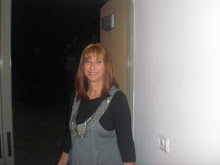Learning Possibilities: waiting your turn, sharing with others, improving memory and developing creativity.
Materials you can use:
1. Small cloth in the middle of the table or on the floor.
2. Pages of pictures or photographs of people, places, animals and interesting things torn or cut out from old magazines. Players choose about three pictures each (depending on the number of players and the TIME you have to play)
3 One Dice.
How to Play
Spread out all the pages, photos & pictures on the cloth.
Turn Taking
Choose pictures in turns to avoid problems with duplicate choices. First round, one by one the participants choose one picture. Then round 2 & 3 follow the same instructions.
For the first turn try going clockwise. The second turn go anti-clockwise. After that you could throw a dice to see who goes first, one time the HIGHEST throw start another time the lowest starts. It’s important to spend time on rules of orderly and fair turn taking.
The Story Begins:
1. Each player in turn shows their pictures and tells what they see in them. As they finish their turn, they place the pictures back on the small cloth. The first round of the game ends when all the pictures are back on the cloth.
The OLDEST or YOUNGEST person begins by taking ONE picture from the collection, NOT necessarily one they had chosen before. Then they START a GROUP STORY with NO more than 3 or 4 sentences which are connected in some way to their picture (be flexible here!).
N.B. Before the first player starts you (the parent) could use a standard beginning and say: ‘Once, a long time ago, in a far away place, there was a….’ and then the children tell their ideas for the continuation of the story. When they have finished they put down the picture in front of them, NOT back on to the cloth.
2. The next in turn continues the unfinished GROUP story, telling a few words or sentences about their picture. Each new storyteller chooses a new picture which will CONTINUE the storyline. Remember that there has to be a connection to the previous teller’s storyline! The sentences can be short, for a young child for example he may just say ‘the dog came in’ and that will be fine.
3. The END of the story…
When all the pictures are finished OR when your time limit has come to an end the last teller has his turn (equal turns for all) and ends the story, using ANY picture from the whole collection. If necessary for clarity the adult who began can end the stories with a good easy conclusion. OR the parent can say and so the STORY ended, with all its characters having had their say!!
If you want more activity, each participant can think of a name for the story and draw a picture to illustrate it. Then in turn they can share their title, each one being applauded by members of the family.
I hope you ENJOY telling your family tale, do let me know how it went for you! I'd like to hear some of the stories you told too, you can send them to me on the ITQS email, Pamela.

No comments:
Post a Comment